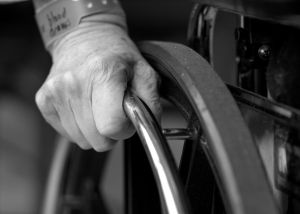
California, as in all other states, there are laws in place that were crafted to prevent elder abuse in nursing homes. Unfortunately, however, elder abuse still occurs in this state, and, in spite of some high-profile horror stories of wrongdoing against the elderly in convalescent homes, public advocacy or investigative group studies show that many such cases go unreported or, at best, quickly reviewed and then set aside by regulators.
Shocking Death Foreshadows Key Measure
At least one notorious recent case of elder abuse has been instrumental in prompting additional legislation to help improve the lot of senior citizens in nursing homes. In the wake of the Feb. 26, 2013, case of Lorraine Bayless, 87, who collapsed and then died in a Bakerfield convalescent home after the staff there stated that they could not perform CPR on her, the state Legislature has passed a bill that would forbid employees of retirement homes from not taking such life-saving measures as CPR on retirement home residents. The measure in on the desk of Gov. Jerry Brown awaiting his signature.
Beyond the well-known instances of neglect, however, there are a significant number of cases of suspected violence and alleged misconduct by staff members at nursing homes in California. Worse still, according to a study filed by the Center for Investigative Reporting and KQED that appeared in the San Francisco Chronicle, state regulators are hastily opening and closing probes into suspected elder abuse without ever leaving their desks. According to the report, in 2009, the Department of Public Health ordered department investigators to dismiss almost 1,000 pending cases of misconduct, a move that apparently had been prompted by a ballooning backlog of cases. In the wake of the DPH directive, the overwhelming majority of cases in which abuse or misconduct has been alleged have been closed without the state taking action. Not surprisingly, Sacramento has also significantly reduced the number of license revocations for nursing home employees suspected of abuse and misconduct.
Abuse Comes in Varied Guises, Has Multiple Causes
The causes of nursing home abuse, which can include physical, mental or financial abuse – the most common form of physical abuse suffered by patients are beatings, sexual assaults and forced feedings of food or medicine – are largely centered around a few well-known factors. Typically, abuse at convalescent homes arises from understaffed facilities, overworked employees, stressful working conditions and inadequate training. In many instances these factors result in employee burnout, which, in turn, causes nursing home staff members to lose empathy and patience for the residents of these facilities, and then to manifest itself in the form of neglect or abuse. All convalescent homes receiving federal funds are governed by the Nursing Home Reform Act, which mandates that a nursing home perform an evaluation of each resident and to prepare and execute a customized “plan of care” reflecting the optimum mental and physical treatment for each resident.
Gregory J. Brod is experienced in the practice area of elder abuse law and is prepared to help anyone who has been hurt by the mistreatment of a senior citizen at a nursing home. If you or a loved one has been harmed by abuse or misconduct in an elder living facility please contact the Brod Law Firm for a free consultation.
-James Ambroff-Tahan contributed to this article.
See Related Blog Posts:
Northern California Elder Abuse Attorney on the Threat of Emotional Abuse
California Elder Abuse Lawyer on the Fight against Financial Exploitation
 San Francisco Injury Lawyer Blog
San Francisco Injury Lawyer Blog

